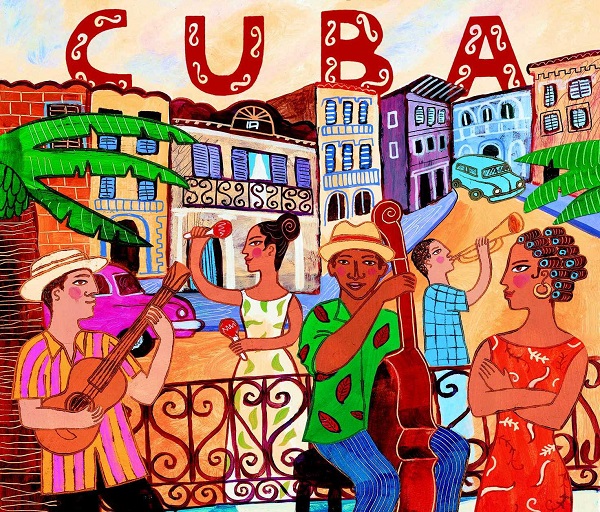13.3.2 Dayramir González

Dayramir González, a prominent Cuban jazz pianist, was involved with music from a young age. At the age of four, his father sat him down at the piano for the first time, while listening to records by a wide variety of artists. He completed his musical training at the National School of Art (ENA) (120th Street between 9th and 13th, Cubanacán, Playa, Havana). Later, he studied composition at the Higher Institute of Art (ISA) (1110th Street between 9th and 13th, Cubanacán, Playa, Havana), with Professor Juan Piñera.
He performs songs from a wide variety of musical genres, including Timba, boleros, classical music, contradanzas, danzones, blues, and hip hop.
Throughout his artistic career, he has worked with prominent Cuban groups and musicians, including Oscar Valdés’s Diákara, Giraldo Piloto, Habana de Primera, and others.
He created his own group in 2006, called Habana en Trance. With this group, he recorded an album bearing his name, which was released by the Colibrí record label. That same year, he won the renowned JOJAZZ event for young jazz musicians.
Currently, this young Cuban instrumentalist is pursuing his musical studies at Berklee College of Music in Boston, an institution considered the world’s leading university for contemporary music.
Dayramir González arrived at this school through his participation in a demanding competition held in Mexico in early 2010, and he obtained a full scholarship. Out of a total of 3,000 applicants, only nine were selected. He entered the competition, sponsored by the General Society of Authors and Publishers of Spain (SGAE).
In his first year, he took classes in bebop, jazz lines, chords, transcriptions, modal harmony, arrangements for 4, 5, and 6 brass, and even business, sound engineering, and music production classes.
Along with the great saxophonist and principal professor of the group, which Dayramir González is a member of at Berklee, Greg Osby participated in groups that played American jazz. He was also part of the orchestras accompanying figures such as Gilberto Santa Rosa, Marc Anthony, Juan Luis Guerra, and Jerry Rivera, in extracurricular performances in Boston.
Another experience he had during his stay in that country was playing in Los Angeles during a short fall break with musicians of various nationalities, from Cubans and Puerto Ricans to Italian, Mexican, Spanish, and one American.
In New York City, at Hostos Community College, he performed a concert before an audience of eight hundred. He performed twenty-two solo piano pieces in his debut performance as a musician in that city.
Dayramir González was also selected to join the orchestra that honored Chucho and Bebo Valdés upon receiving their doctorates from Berklee; he was also chosen to be part of the album released every two years by Berklee under the name “Jazz Revelation Record” (JRR), which serves as an international launching pad for its best students.
In his first year, he played alongside world-class music stars such as Fannia All-Star pianist Larry Harlow and Latin legend Eddie Palmieri.
Dayramir González is considered by specialists and critics to be the pinnacle of the new generation of Cuban pianists. He is one of the first of the younger generations of jazz pianists, both in Cuba and worldwide.








